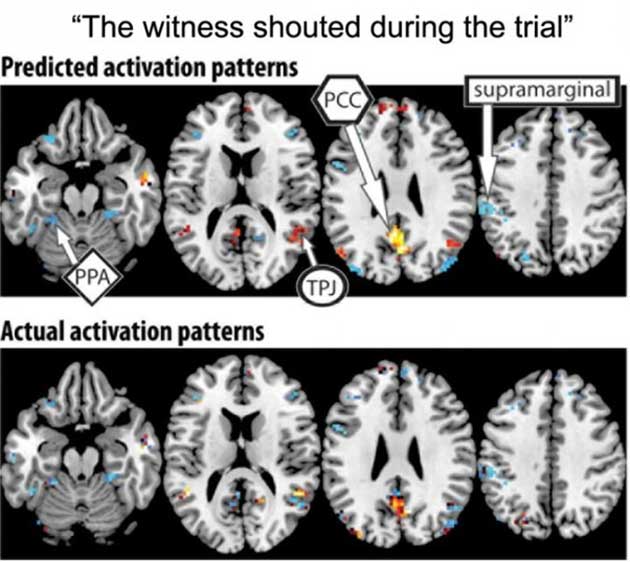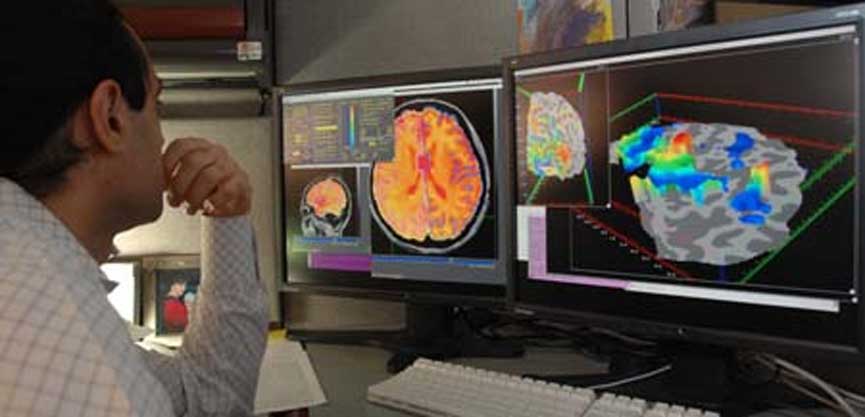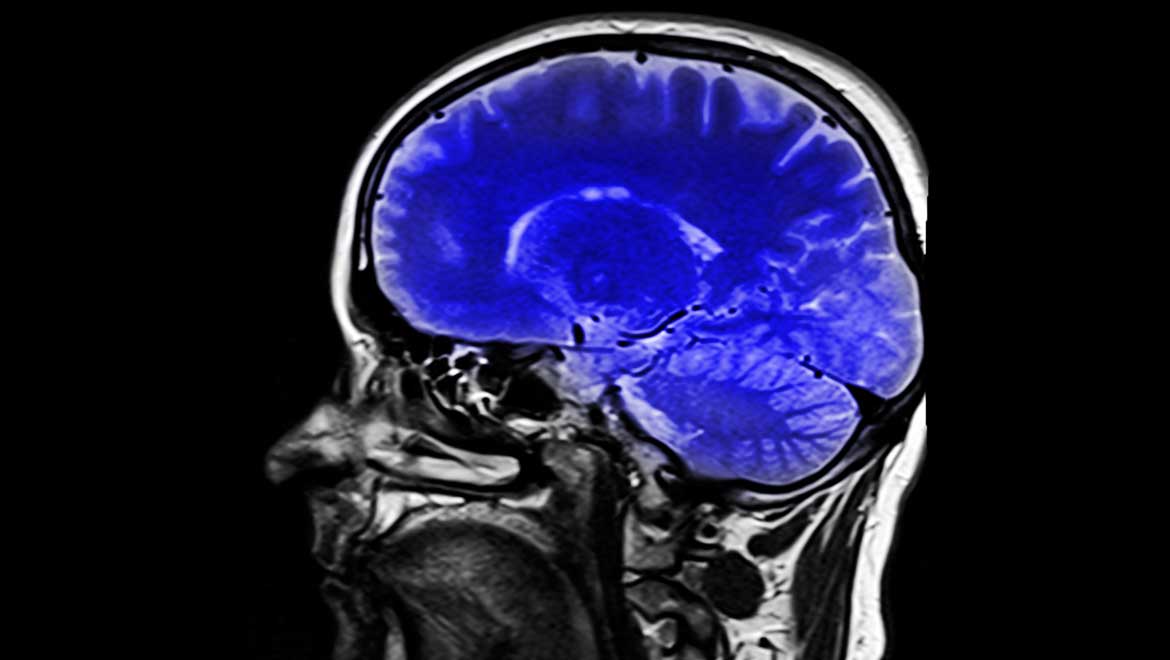When we think of mind reading, we may imagine a process by which an entity, perhaps aided by super-advanced technology, ‘listens in’ on our thoughts to capture or record them. However, thoughts and how they manifest in the brain are much more complicated than simple voices in our heads. Currently, the best of our scientific tools that come close to representing how it works are non-invasive techniques that can produce accurate 2D, 3D or 4D (i.e. ‘real-time’) images of a person’s brain and which specific regions are involved in thought formation. These imaging systems use either radioactivity or magnetic resonance to generate increasingly detailed outlines of how the brain and conscious ‘mind’ works. For example, scientists have found that a surprisingly large amount of brain activity, in several different regions at once, can be required to forms thoughts about everyday things like objects. Therefore, ‘mind-reading’ through the interpretation of brain imaging may indeed be possible.
MRI: Thoughts in Color
Scientists using state-of-the-art MRI hardware and software have known for some time that “mind-reading” is possible– up to a point. In other words, they have confirmed links between activity in specific parts of the brain and simple concepts such as singular words or objects. Medical researchers can analyze this brain activity, and establish which regions of the brain are involved, through the real-time imaging of the organ. Functional magnetic resonance imaging (fMRI) is just such a technique that generates these ‘maps’ of a living brain, with its activity represented in greyscale or sometimes color. A team of researchers at Carnegie Mellon University, led by Dr. Marcel Just, recently published research that appears to confirm that their fMRI data is strongly related to, and can thus predict, complex thought-forms, such as the content of a sentence.

This latest research led by CMU's Marcel Just builds on the pioneering use of machine learning algorithms with brain imaging technology to "mind read." The findings indicate that the mind's building blocks for constructing complex thoughts are formed by the brain's various sub-systems and are not word-based. Credit: Carnegie Mellon University
These findings are an advancement on earlier work, which showed that certain fMRI maps are correlated with thoughts related to simpler concepts, such as objects. That research suggested imaging-driven “mind-reading” may be limited to the detection of singular semantic units, or units of meaning, which meant that the technology could not assess more complex human thoughts after all. However, the more up-to-date work of Dr. Just and his team has shown that imaging is capable of measuring multiple semantic units, or ‘features’, which combine to give the neural ‘signature’ of a sentence. What makes the research particularly compelling is that the team, which also consisted of Drs. Wang and Cherkassky, were able to replicate the detection of similar signatures in a number of different subjects reading or thinking about the same sentences. This indicates that the results are consistent, and, more importantly, that certain complex thoughts may be neurologically universal across any given group of people.
Other applications for MRI ‘mind-reading’
Scientists such as Dr. Just and his team believe these breakthroughs are more likely to be applied to other aspects of the mind, such as linguistics and how this is controlled within the brain. Accordingly, they have also recently applied their findings to a subsequent study in which they found that their established ‘neuro-signature’ maps were able to predict the same sentences when read by participants in Portuguese. The fMRI method was also capable of predicting how the brains of the study participants would ‘read’ 60 previously un-encountered sentences, regardless of whether the participant in question spoke both English and Portuguese or Portuguese alone. This suggests a role for these imaging techniques in language-learning and its study.
Other uses for fMRI ‘thought-maps’
The idea of ‘mind-reading’ may be off-putting for some people. It may raise thoughts of futuristic surveillance or privacy invasion. However, most of the imaging technology of today is not optimized to detect semantic units, tends to be rather cumbersome and is of course too expensive for widespread public dispersal. However, this form of ‘mind-reading’ may also be used to study other aspects of the brain, such as how fMRI-mapped activity relates to other things. These may include learning, social interaction and emotional control. In time, it may even become sophisticated enough to help us understand disorders that affect these functions, as well as other areas of neurology. However, this method of divining brain activity using imaging is in its infancy. fMRI also tends to be limited in the number of simultaneous semantic units it can detect, thereby potentially increasing the risk that it may ‘misinterpret’ a particularly complex thought. The team at Carnegie Mellon University did improve on this unit-detection rate up to 42 units, but a complete system of ‘mind reading’ may still be beyond it.

Researcher checking fMRI images (Public Domain)
Thoughts are a complex process that humans have only just begun to understand on a neurological level. However, examples of research such as this indicate huge potential to study the phenomenon, and that of others such as the “mind”, in the future. Scientists like Dr. Just at CMU intend to apply it to the study of other complex forms of brain activity, such as our behavior and learning. Other colleagues of his at the institution have applied similar work to applications such as artificial intelligence and cognitive neuroscience. Dr. Just’s own work indicates applications for his fMRI method in linguistics and similar fields. On the other hand, these studies represent very preliminary work, and have been tested using small groups of participants. Therefore, in practical terms, true mind-reading technology may still be a far-flung idea.
Top image: X-ray Photograph (Public Domain)
References:
Wang J, Cherkassky VL, Just MA. Predicting the brain activation pattern associated with the propositional content of a sentence: Modeling neural representations of events and states. Human brain mapping. 2017. http://onlinelibrary.wiley.com/doi/10.1002/hbm.23692/abstract
Yang Y, Wang J, Bailer C, Cherkassky V, Just MA. Commonality of neural representations of sentences across languages: Predicting brain activation during Portuguese sentence comprehension using an English-based model of brain function. NeuroImage. 2017;146:658-66. http://www.sciencedirect.com/science/article/pii/S1053811916305833
Carnegie Mellon University. Beyond bananas: 'Mind reading' technology decodes complex thoughts. ScienceDaily. 2017. June 26. Available at: www.sciencedaily.com/releases/2017/06/170626105758.htm







No comment